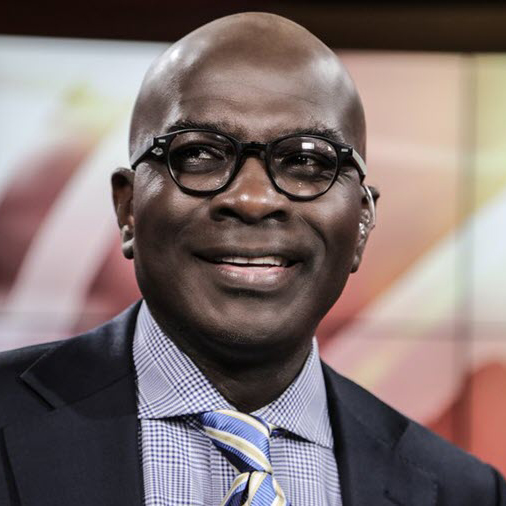SCOTUS Ruling On Deregulation Is Good News to Broadcasters
Even if it’s 20 years too late, the judgment helps

The Supreme Court of the United States’ unanimous decision in FCC v. Prometheus Radio Project may be long past due for much needed regulatory relief from anachronistic ownership restrictions that make no sense today, but it is welcome news nonetheless. It is no exaggeration to say that the modern video marketplace is the most vibrant the world has ever seen, and growing more competitive every day. But until today’s (April 1) ruling, local television broadcasters, like my seven African-American owned Howard Stirk Holdings stations, could not maintain healthy, economically viable businesses in that hyper-competitive marketplace because a single panel of the U.S. Court of Appeals for the Third Circuit unfairly hamstring local journalism and froze in place ownership rules that have not reflected true marketplace conditions for years. Thank Heaven that ice dam has now been broken.
Three of the FCC’s current ownership rules are impacted. The first is the Newspaper/Broadcast Cross-Ownership Rule. Back in 1975, in order to promote competition, the FCC forbade ownership of a local newspaper and a local television station in the same market. Sadly, today the newspaper industry is all but dead and the video marketplace looks nothing like it did then. The second is the Radio/Television Cross-Ownership Rule. Initially adopted in 1970, that rule limits the number of combined radio stations and television stations that an entity may own in a single market. The third is the Local Television Ownership Rule. Initially adopted in 1964, that rule restricts the number of local television stations that an entity may own in a single market.
Pursuant to Section 202(h) of the 1996 Telecommunications Act -– a/k/a the quadrennial review –- the FCC is required to modernize its ownership rules to reflect changing competitive realities. While the FCC tried several times over the years to update its rules accordingly, the Third Circuit consistently rejected those efforts and left the broadcast industry frozen in a bygone era, as if there was only limited local media competition, a time when there were only three national broadcast networks and a small handful of broadcast TV stations in most markets.
In the past the FCC believed that competition, localism, and viewpoint diversity were best served by constraining common ownership of the relatively limited number of local media outlets. Today’s media marketplace is vastly different. There are thousands of video programming options, and multiple platforms deliver video programming via cable, satellite, wireless, and the Internet. Viewers can access an almost infinite library of video programming virtually whenever and wherever they choose.
Although the marketplace has transformed in recent decades, the public service role of local broadcasters has not changed. The broadcast industry provides a free-over-the-air service to nearly every community in the nation, creating and distributing news, weather, public affairs, sports, and entertainment programming, including needed public health and emergency information. The coronavirus pandemic has reinforced the critical importance of reliable access to local and national news and information programming via local broadcast television.
Television stations cannot fulfill that critical role if their businesses are bound by out dated policies obstructing their ability to survive in today’s rapidly changing, increasingly diverse, and exceedingly competitive media marketplace. Like every other business, the survival of local television depends on economic viability. Stations that cannot compete cannot survive, and broadcasters today face competitors too numerous to count: cable programmers, satellite services, online news and programming providers, subscription video-on demand platforms, video programming websites, and many more. In stark contrast to television broadcasters, nearly all of these competitors are free to operate in local markets unconstrained by the FCC’s decades-old ownership limits.
This is why this Supreme Court ruling is such welcome relief. The FCC’s much-needed modernized broadcast ownership rules will, at long last, be allowed to take effect. This is particularly important for television broadcasters because they uniquely face overwhelming competition from the tech giants -– Google, Amazon, Facebook, Netflix and Apple -– and the titans of telco -– AT&T, Verizon and T-Mobile-Sprint. To illustrate, in 2018 Google earned $116.3 billion in advertising revenues. For that same time period, the broadcast industry as a whole earned about $20 billion in over-the-air advertising and digital revenues. See, Sen. Maria Cantwell, U.S. Senate Committee on Commerce, Science, and Transportation, Local Journalism: America’s Most Trusted News Sources Threatened (Oct. 2020) (“the ad revenues that Google is projected to earn this year will exceed the combined ad revenues of all TV and radio stations in the country”).
The smarter way to stay on top of broadcasting and cable industry. Sign up below
Freed from the Third Circuit’s iron grip, the broadcast industry will hopefully –- if it’s not too late -– be able to better compete in the fierce media marketplace and avoid going the way of the newspaper industry.
Armstrong Williams is a principal owner of the Baltimore Sun and manager/sole owner of Howard Stirk Holdings I & II Broadcast Television Stations.

